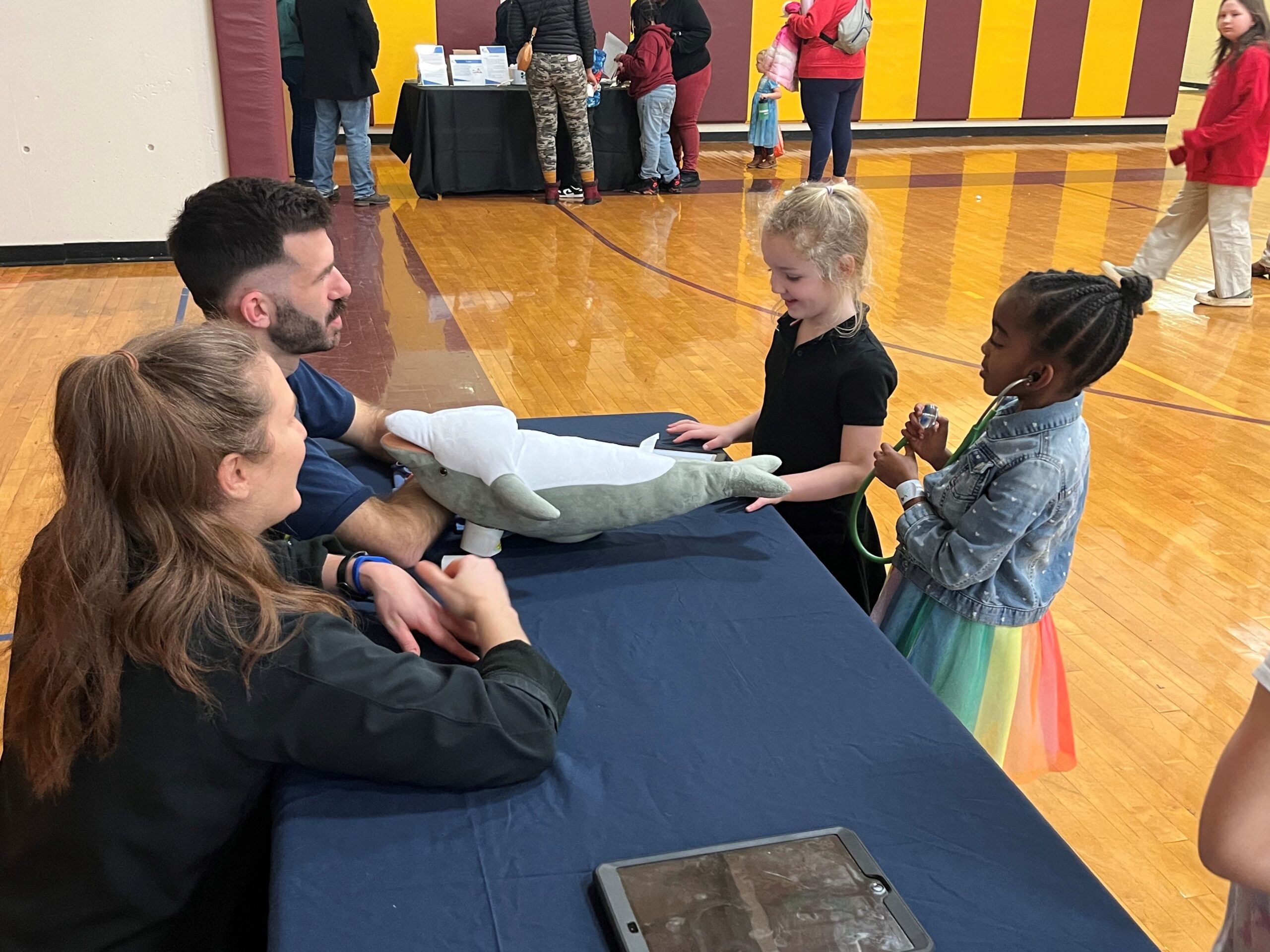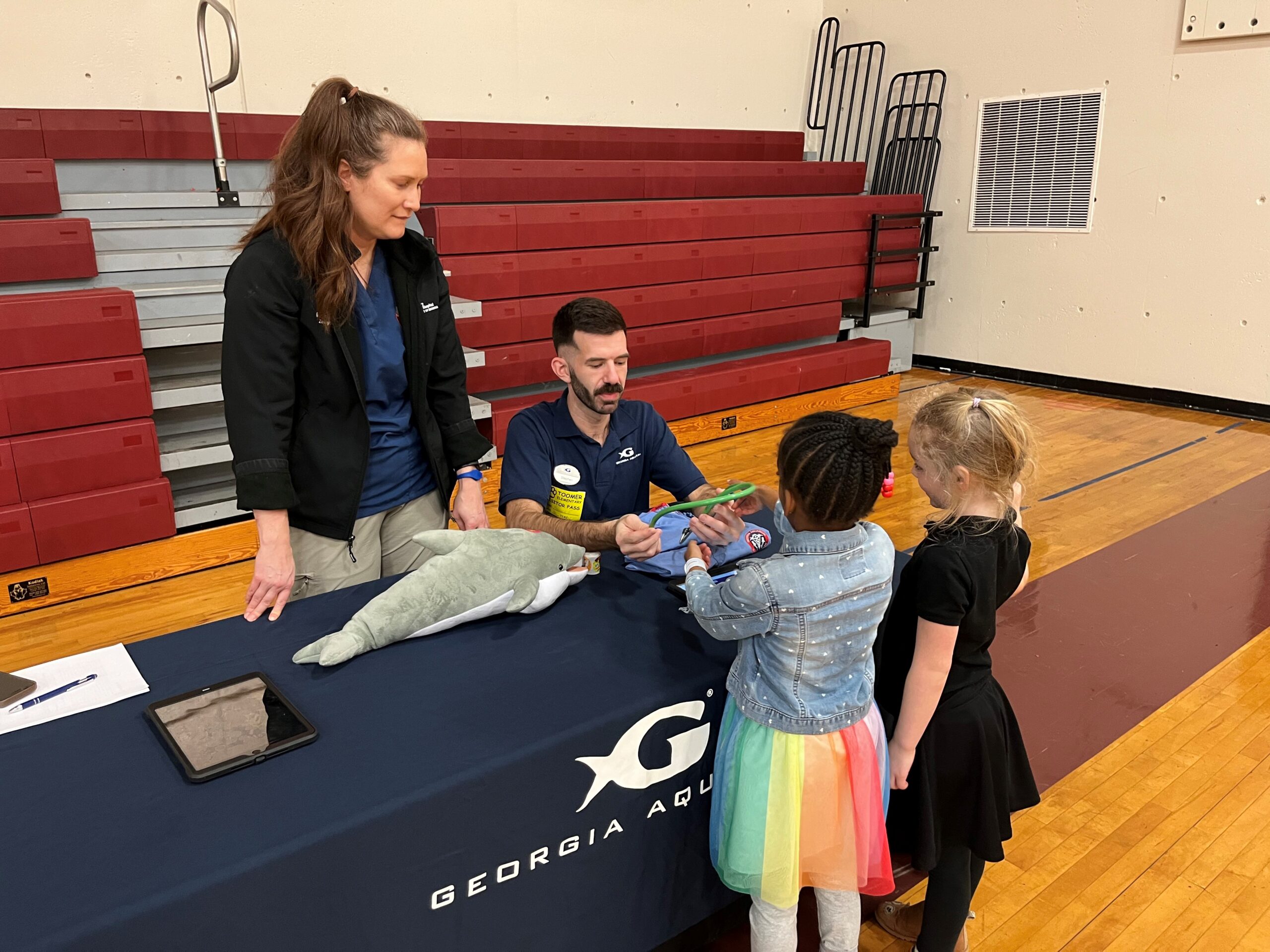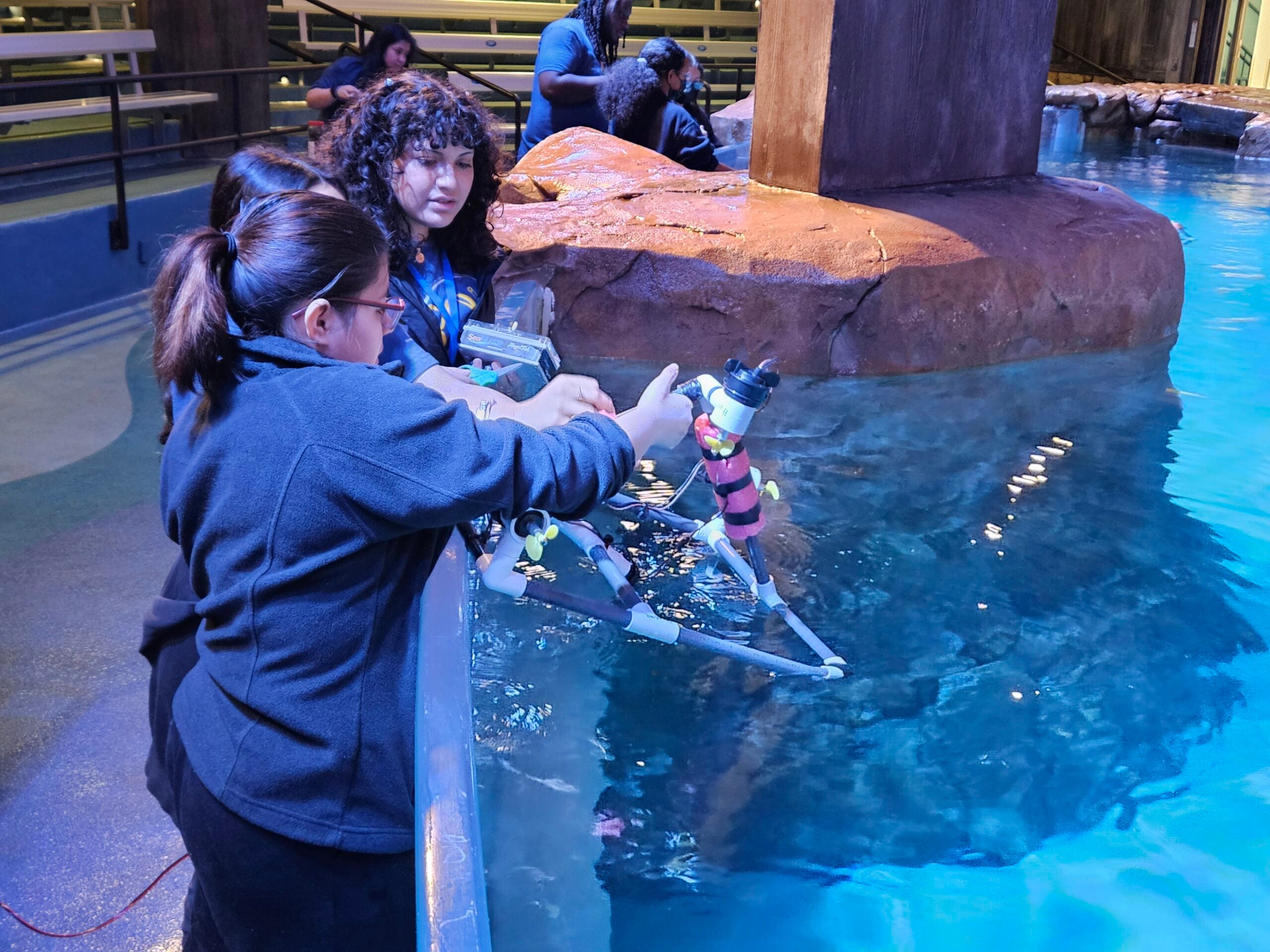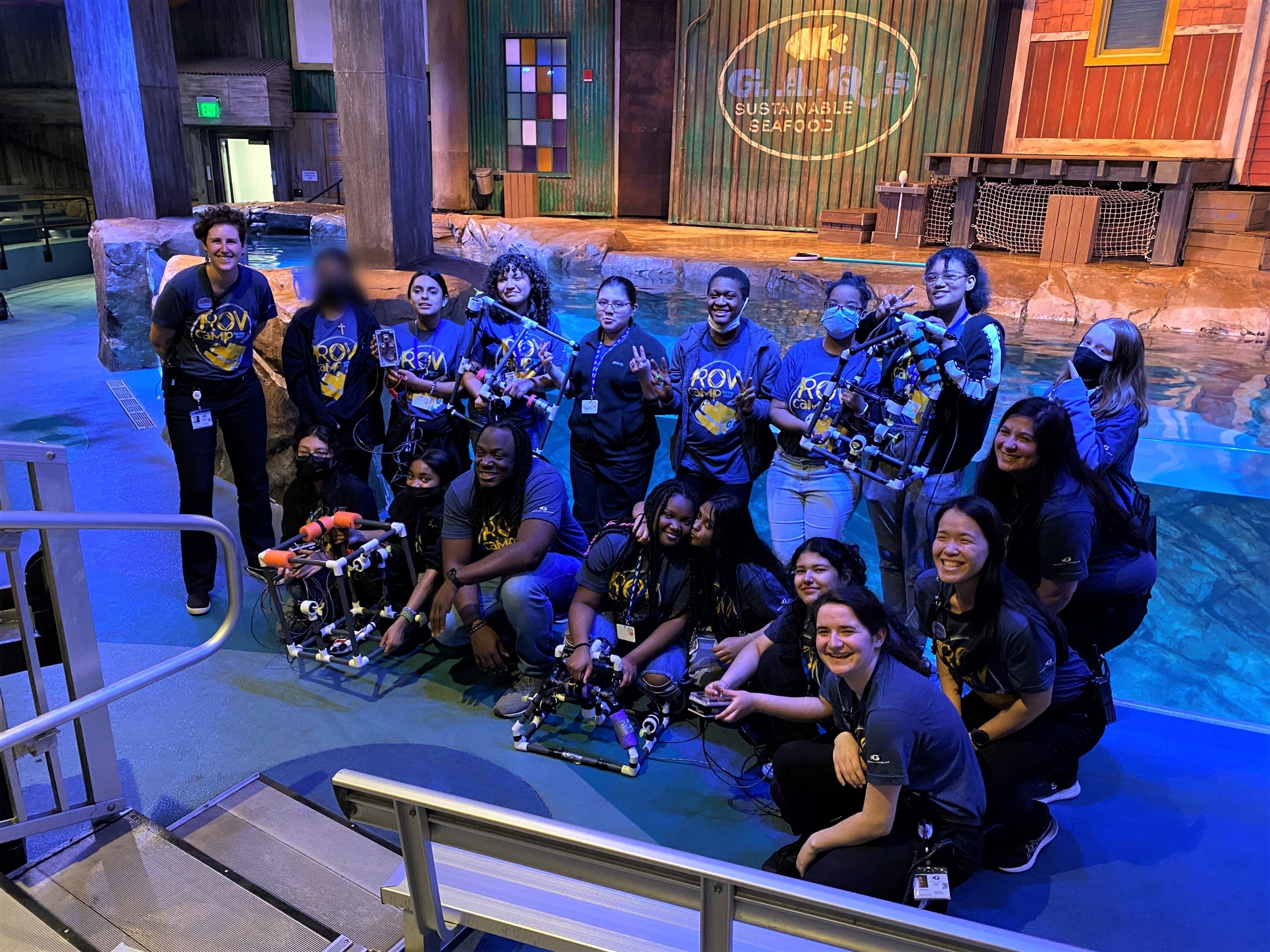Oceanic Institute and Georgia Aquarium have partnered in order to successfully produce Squarespot Anthias (Pseudanthias pleurotaenia) through aquaculture!
Squarespot Anthias (Pseudanthias pleurotaenia) are a beautiful marine fish species found throughout the Pacific Ocean. They are sequential hermaphrodites that start off life as yellow to orange-colored females. The dominant individual will change to male displaying deep pink coloration with a square shaped spot on their side, hence their name. Harems of this species are popular in public aquariums for their beautiful colors and interesting social dynamics. At Georgia Aquarium, these colorful fish can be seen at the Indo-Pacific Barrier Reef exhibit in its Tropical Diver gallery.
When brought in from the wild, these fish can often have parasites or bacterial infections that are difficult to treat. Aqua cultured fish often have fewer disease issues and are hardier than their wild counterparts, being more suited for aquarium settings. So far, 9 anthias species are known to have been reproduced using aquaculture techniques.
In a first for Oceanic Institute, in partnership with Georgia Aquarium, the Institute has successfully raised this species!
Georgia Aquarium obtained broodstock squarespot anthias (the adult individuals from which the eggs and offspring come from) and went through the vigorous process of quarantining, caring for, and conditioning those individuals. The adults were then shipped all the way across the ocean to Oahu, Hawaii. They were received and cared for by the Finfish department at Oceanic Institute of Hawaii Pacific University (OI). In less than one month the broodstock spawned viable eggs!
These eggs were stocked into the Finfish hatchery and soon baby squarespot anthias hatched. Using a combination of protocols developed by Oceanic Institute, as well as published protocols on another anthias species, the team at OI was able to successfully raise that very first batch of eggs, and at 30 days after hatching, the larval anthias had settled into juveniles.
After growing for a few weeks, the juvenile anthias made the journey to Georgia where they arrived safely and will continue to grow with the help of the incredible care team at Georgia Aquarium before they are ready for display. This collaborative and important partnership between OI and Georgia Aquarium is to hopefully expand the Aquarium’s scope of work with tropical fish through aquaculture and to create a more sustainable future.
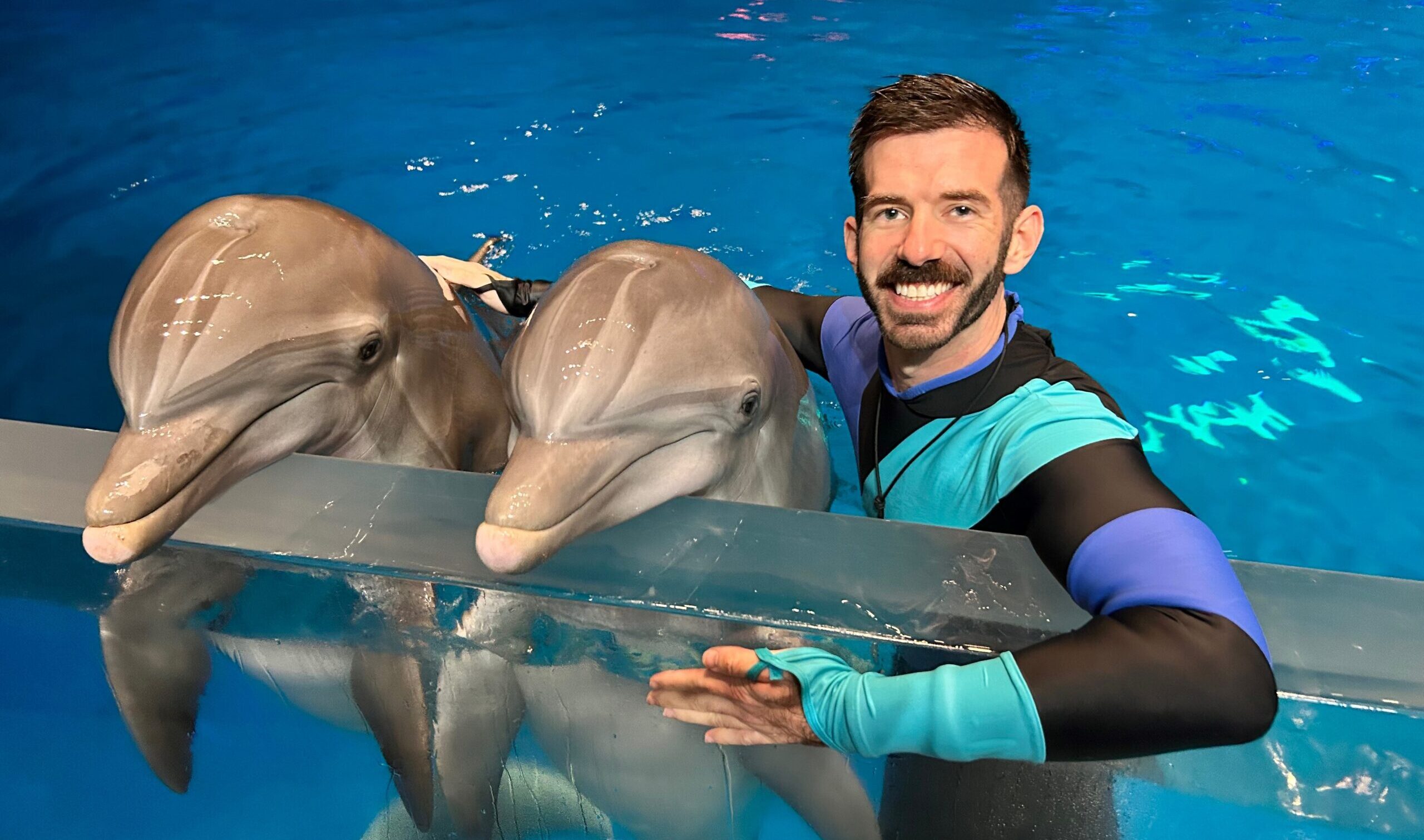 By: Stephen Fischer, Associate Curator, Dolphin
By: Stephen Fischer, Associate Curator, Dolphin